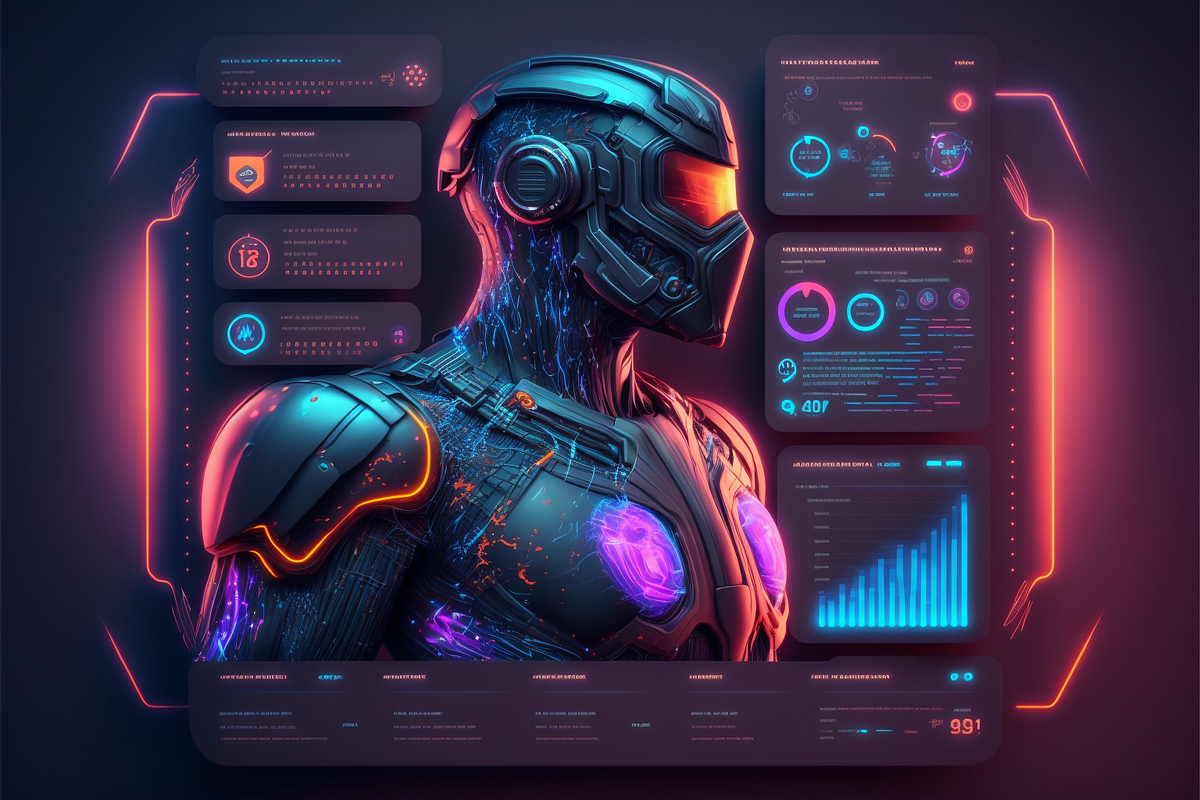In the ever-accelerating world of design and engineering, a revolutionary paradigm is not just emerging—it’s taking root and fundamentally reshaping our approach to creation. This paradigm is generative design, a collaborative process where human ingenuity partners with the immense computational power of artificial intelligence. It represents a move away from the traditional, linear path of design and into a dynamic, exploratory workflow that unlocks solutions previously beyond our imagination. As these AI-driven workflows bloom across industries, they are leaving a trail of unprecedented efficiency, groundbreaking performance, and truly innovative forms.
This in-depth article will explore the transformative landscape of generative design. We will journey from its core principles and differentiate it from similar technologies to the powerful software that drives it. We will also examine its real-world impact through compelling case studies and discuss the tangible benefits and practical challenges of its adoption. Finally, we’ll look toward the horizon to see how this synergy between human and machine intelligence is set to define the future of making things.
The Foundation: Understanding Generative Design
To truly appreciate the bloom of generative design, one must first understand its roots. At its heart, generative design is an iterative exploration process. Unlike traditional design where an engineer or designer creates a specific solution based on their experience and then validates it, generative design flips the script.
The designer’s role shifts from being a direct creator to a strategic guide. They begin not by drawing a part, but by defining the problem in detail for the AI. This involves establishing a clear set of rules and parameters for the design space. These inputs typically include:
- Goals: What is the primary objective of the design? Is it to minimize weight, reduce stress concentration, maximize stiffness, or a combination of multiple factors?
- Constraints: What are the non-negotiable boundaries? This includes defining keep-in and keep-out zones (areas where material must or must not be present), specifying the type of material to be used (e.g., Aluminum 6061, Titanium, ABS plastic), and outlining the manufacturing method (e.g., 3D printing, 5-axis milling, casting).
- Loads and Forces: Where will the part experience stress, pressure, heat, or vibration during its operational life? These real-world conditions are crucial for the AI to simulate performance.
Once these parameters are set, the generative design software unleashes its algorithms. Using a combination of machine learning and cloud computing, it explores thousands, sometimes millions, of potential design permutations. It rapidly generates and analyzes a vast spectrum of solutions, learning from each iteration what works and what doesn’t. The result is not a single design, but a whole ecosystem of viable options, each presented with data on how it meets the predefined goals. The designer can then analyze these computer-generated solutions, weigh the trade-offs between factors like weight and cost, and select the optimal design for refinement and production.
It’s crucial to distinguish generative design from a related but distinct technology: topology optimization. Topology optimization is a powerful tool that typically starts with an existing design concept or a defined block of material and carves away non-essential mass to lighten and optimize it for a specific set of loads. Generative design, by contrast, often starts from a blank slate. It doesn’t just refine an existing idea; it conceives entirely new topologies and geometries from the ground up, based only on the core functional requirements. This allows it to produce radical, often organic-looking forms that a human designer might never have conceived.
The Tools of Creation: The Software Ecosystem
The rapid adoption of generative design workflows is directly linked to the development of sophisticated and increasingly accessible software tools. These platforms are the engines that power the AI-driven creative process, integrating seamlessly into broader digital engineering environments.
-
Autodesk Fusion 360: Perhaps the most prominent evangelist for generative design, Autodesk has integrated this technology directly into its cloud-based Fusion 360 platform. Its strength lies in its user-friendly interface and its consideration of manufacturability and cost from the outset. By allowing users to specify different manufacturing methods and material costs, Fusion 360 delivers not just technically viable designs, but economically practical ones as well.
-
PTC Creo: A heavyweight in the CAD world, PTC offers powerful generative design capabilities within its Creo software suite, primarily through its Generative Topology Optimization (GTO) extension. It allows engineers to quickly develop innovative and optimized product designs based on functional objectives and constraints. Creo’s focus is on creating high-quality, manufacturable CAD models that are fully editable, providing a smooth transition from concept to detailed design.
-
Siemens NX: Siemens has embedded generative design deep within its NX software, a comprehensive solution for design, simulation, and manufacturing. The platform’s Design Space Explorer leverages the HEEDS simulation and optimization engine to automate the exploration of design alternatives. It’s particularly powerful for complex, multi-physics problems, allowing engineers to balance performance across various domains like structural integrity and thermal dynamics.
-
Dassault Systèmes CATIA: Known for its dominance in the aerospace and automotive industries, CATIA provides generative design tools that cater to the most demanding applications. Through its 3DEXPERIENCE platform, it offers a function-driven generative design approach that enables the creation of optimized conceptual parts and assemblies from functional specifications. It excels at generating lightweight yet strong components that are critical for high-performance vehicles and aircraft.
Beyond these major CAD suites, specialized software like nTopology is pushing the boundaries further. nTopology focuses on creating incredibly complex and high-performance geometries that are often impossible to model in traditional CAD systems, making it a favorite for advanced additive manufacturing applications, from intricate lattices to optimized heat exchangers.
Real-World Impact: Generative Design in Action

The true measure of any technology is its practical application. Generative design workflows are blooming across a diverse range of industries, solving complex problems and driving tangible results.
-
Aerospace and Automotive: These sectors were early adopters, driven by an insatiable need for lightweighting. Every kilogram saved on a car or aircraft translates directly into improved fuel efficiency and performance.
- General Motors (GM): In a widely cited example, GM used generative design to reimagine a simple seat bracket. The AI-powered process produced a startlingly organic-looking design that was 40% lighter and 20% stronger than the original part, which was made of eight separate components. The new design consolidated all eight into a single, 3D-printed piece.
- Airbus: The European aerospace giant utilized generative design to create its A320 “bionic partition,” the dividing wall between the passenger cabin and the galley. The final design, inspired by the growth patterns of slime mold, was 45% lighter than its predecessor, saving significant weight and fuel over the aircraft’s lifetime.
-
Architecture, Engineering, and Construction (AEC): The building industry is now leveraging generative design to optimize everything from structural integrity to office layouts.
- MX3D Bridge: In Amsterdam, a fully functional steel bridge was 3D-printed by robots using a design optimized by generative algorithms. The software helped create a structure that was both incredibly strong and materially efficient, using steel only where it was structurally necessary.
- Office Design: Autodesk used its own tools to design its Toronto office. By inputting goals for natural light exposure, adjacency preferences for different teams, and low acoustic distraction, the software generated thousands of layout options, helping the designers find a near-perfect solution that balanced all competing objectives.
-
Industrial Manufacturing and Consumer Goods: From high-performance equipment to everyday items, generative design is optimizing form and function.
- Under Armour: The athletic apparel company used generative design to create the midsole for its “Architech” line of training shoes. The result was an intricate 3D-printed lattice structure that provided an ideal balance of stability and cushioning, customized for athletic movements.
-
Healthcare and Medical Devices: The ability to create one-of-a-kind, performance-optimized shapes makes generative design ideal for the medical field. It’s being used to develop custom implants, such as spinal cages and hip replacements, that are tailored to a patient’s specific anatomy. This leads to better fit, improved biocompatibility, and faster recovery times.
Weighing the Pros and Cons: Benefits and Challenges
Embracing generative design offers a compelling list of advantages, but it also comes with its own set of implementation hurdles.
A. Accelerated Innovation and Drastically Shorter Design Cycles The AI’s ability to generate and pre-validate thousands of options in the time it would take a human to develop a handful of concepts massively speeds up the front end of the design process.
B. Creation of High-Performance, Lightweight Parts By placing material only where it is absolutely needed, generative design excels at producing parts with an optimal strength-to-weight ratio, a critical factor in aerospace, automotive, and performance sports.
C. Consolidation of Complex Assemblies The technology often combines multiple components of a traditional assembly into a single, complex part. This reduces manufacturing steps, assembly time, points of failure, and overall supply chain complexity.
D. Exploration of a Vastly Wider Design Space Generative design moves beyond human preconceptions and cognitive biases, exploring solutions that a designer might never consider, leading to truly novel and breakthrough concepts.
E. Reduced Material Waste and Lower Long-Term Costs Optimized designs use less material, which not only lowers the cost of the raw material but also significantly reduces waste, especially when paired with additive manufacturing. This contributes to more sustainable manufacturing practices.
F. Unlocking Designs Beyond Human Intuition The organic, biomimetic, and often counter-intuitive shapes produced by generative design represent a new visual and functional language for engineered products, pushing the boundaries of what is considered possible.
Despite these powerful benefits, organizations face several challenges on the road to adoption:
- High Computational Demand: Exploring millions of design permutations requires significant computing power, often relying on cloud-based services which come with associated costs.
- A New Skill Set: Engineers and designers need to be retrained. The focus shifts from geometric modeling skills to a deep understanding of defining goals, constraints, and manufacturing processes. It requires thinking like a systems architect rather than a traditional draftsman.
- Manufacturing Limitations: Generative design often produces incredibly complex geometries that can only be produced through additive manufacturing (3D printing). While this technology is advancing rapidly, it may not yet be cost-effective or practical for all applications or materials.
- Trusting the “Black Box”: For some seasoned engineers, there can be a reluctance to trust the output of an AI algorithm. A cultural shift is needed to embrace this new collaborative partnership between human and machine.
Charting the Course: Implementing a Generative Workflow

For businesses looking to harness this technology, a strategic and phased approach is key. A successful implementation journey often involves:
- Starting Small: Begin with a pilot project. Select a non-critical component that has clear potential for optimization, such as a bracket, a housing, or a heatsink. This provides a low-risk environment to learn the process.
- Investing in Training: The success of generative design hinges on the user’s ability to define the problem correctly. Invest in training for your design and engineering teams, focusing on the new mindset of goal-setting and constraint definition.
- Integrating a Digital Thread: Ensure that your generative design tools are well-integrated with your existing CAD, CAE (simulation), and CAM (manufacturing) software. A seamless flow of data from concept to production is critical for efficiency.
- Fostering a Culture of Experimentation: Encourage your teams to be curious and to explore the unconventional solutions the AI presents. Celebrate the learning process, even for designs that don’t immediately go into production.
The Future is Generative
The bloom of generative design workflows is more than just a technological trend; it is a fundamental evolution in our capacity to create. It marks a profound shift towards a future where design is a conversation, a partnership between the focused, intuitive intelligence of the human mind and the boundless, analytical power of the machine.
As we look ahead, we can expect these workflows to become even more intelligent. They will integrate more deeply with advanced material science, predict product lifecycle performance with greater accuracy, and automatically optimize for sustainability goals like carbon footprint and recyclability. The synergy with digital twins and the Industrial Internet of Things (IIoT) will allow for designs that can be continuously optimized based on real-world performance data.
Generative design is democratizing optimization, empowering designers and engineers to achieve levels of performance once reserved for elite R&D labs. It is the key to unlocking the next generation of lighter, stronger, smarter, and more sustainable products that will define our world. The bloom is well underway, and the landscape of creation will never be the same.














